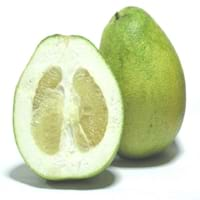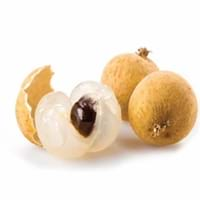Health Benefits
Cancer prevention, Heart care, Prevents Urinary Tract Infection
Anti depressant, Anti-inflammatory properties, Healthy mucus membrane, prevents oral cavity cancer, Prevents anemia, Prevents cases of morning sickness, Prevents lung cancer, Skin rejuvenation, Treatment of colonic diseases
General Benefits
Digestive aid, Fights against infections, Flu treatment, Healing of wounds, Helps in weight loss, Treatment of common cold
Anti oxidant properties, Anti-inflammatory properties, Digestive aid, Gives you energy, Suppresses Arthritis
Skin Benefits
Anti-aging benefits, Brightens and lightens complexion
Reduces wrinkles, Skin rejuvenation
Hair Benefits
Promotes longer and healthier hair, Protects hair
Not Available
Allergy Symptoms
Abdominal cramps, Abdominal pains, Diarrhea, Lightheadedness, Nasal congestion, Nausea, Swallowing difficulties, Swelling of mouth, tongue or lips, Vomiting
Itching, Swelling of mouth, tongue or lips, Tingling sensation in mouth
Side Effects
Allergic reaction, Dizziness, Stomach pain
Mouth irritation, Weight gain
Best Time to Eat
As a snack in the late afternoon, Don't consume at night and before bed, Eat the fresh ones, avoid mixing with any other foods, don't eat after meal., Morning time (before lunch)
As a snack in the late afternoon
Vitamin A (Retinol)
Not Available
Vitamin B5 (Pantothenic Acid)
Not Available
Vitamin B9 (Folic acid)
Not Available
Vitamin C (Ascorbic Acid)
Calories in Fresh Fruit with Peel
Calories in Fresh Fruit without Peel
Not Available
Not Available
Calories in Frozen Form
Not Available
Not Available
Calories in Dried Form
Not Available
Calories in Canned Form
Not Available
Not Available
Type
Citrus, Tropical
Tree fruit, Tropical
Season
All seasons
Mid to late summer
Varieties
Chandler, Cocktail, Cuban Shaddock, Hirado Buntan, Honey, Jaffa Red, Mato Buntan, Pomelit, Reinking, Siamese Sweet and Sweetie
Chompoo Longan, Kohala Seedling, Haew, Edau and Biew Kiew
Seedless Variety
No
Not Available
Color
Green, Pink, Red, Yellow
Rusty brown
Inside Color
Creamy Yellow
Yellowish brown
Taste
Juicy, Sweet
Sweetish
Origin
Malaysia, South-Eastern Asia, Thailand
Mexico
Soil Type
Clay, Loam, Sandy
Well-drained
Climatic Conditions
Warm
Sunny, Warm, Without frosts
Facts about
- Flowers of pomelo fruit are used to make perfumes.
- Pomelo tree wood is used for the manufacture of tool handles.
- Life of pomelo tree is around 10 years.
- Height of pomelo can be 15-20 feet.
- Longan is also called as "Dragon's eye" in China as it gives an impression of an eyeball.
- Longan seeds can be used to absorb the venom after the snake bite and they also help to stop bleeding.
Top Producer
China
Thailand
Other Countries
Argentina, India, Israel, Mexico, South Africa, Sudan, Thailand, Turkey, United States of America
Australia, Combodia, Taiwan, United States of America, Vietnam
Top Importer
Europe
China
Top Exporter
United States of America
Thailand
Botanical Name
Citrus maxima
Dimocarpus longan
Synonym
Citrus grandis
Dragon eye
Subkingdom
Tracheobionta
Viridiplantae
Division
Magnoliophyta
Tracheophyta
Class
Magnoliopsida
Magnoliopsida
Order
Sapindales
Sapindales
Family
Rutaceae
Sapindaceae
Species
C. maxima
D. longan
Generic Group
Citrus fruit
Not Available
Difference Between Pomelo and Longan
We might think that Pomelo and Longan are similar with respect to nutritional value and health benefits. But the nutrient content of both fruits is different. Pomelo and Longan Facts such as their taste, shape, color, and size are also distinct. The difference between Pomelo and Longan is explained here.
The amount of calories in 100 gm of fresh Pomelo and Longan with peel is 38.00 kcal and 83.00 kcal and the amount of calories without peel is Not Available and Not Available respectively. Thus, Pomelo and Longan belong to Low Calorie Fruits and Low Calorie Fruits category.These fruits might or might not differ with respect to their scientific classification. The order of Pomelo and Longan is Sapindales and Sapindales respectively. Pomelo belongs to Rutaceae family and Longan belongs to Sapindaceae family. Pomelo belongs to Citrus genus of C. maxima species and Longan belongs to Dimocarpus genus of D. longan species. Beings plants, both fruits belong to Plantae Kingdom.









